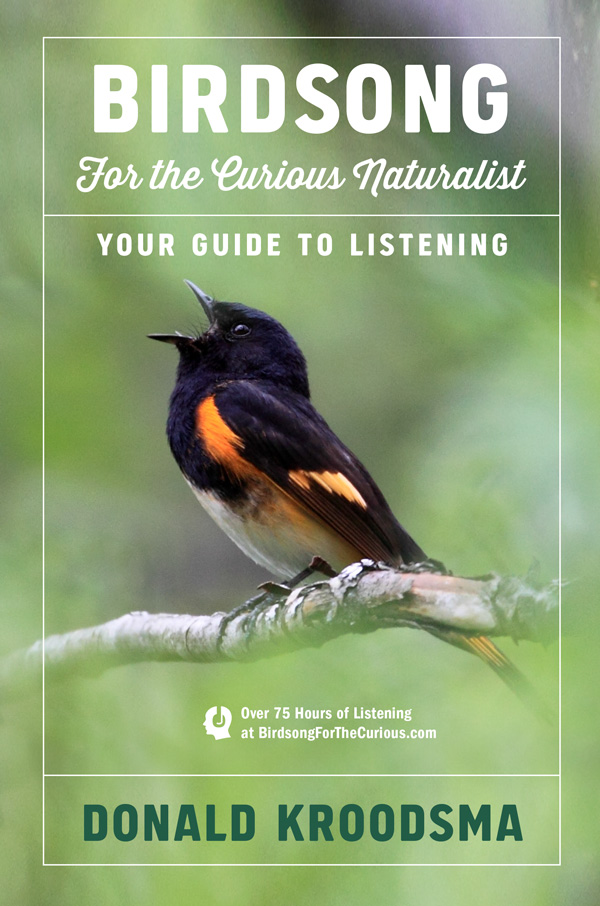26. Neighboring male songbirds learn from each other.
5. More about Song Learning
Big decisions: When, where, and from whom to learn
From page 58 in the book.
Neighboring male songbirds learn from each other. This listening adventure is best done with a species in which each male has only one song, because instantly, in one song, a male tells you all he knows for the comparison you are about to make: the relative similarity in the songs of neighboring males. Chipping sparrows, the two buntings, and yellowthroats are good for this project, simply because two neighboring individuals with identical songs are so noticeable for these species in which there is such great song variety among the individuals in a population. Perhaps try listening to some of the many other songbird species in which each male has a single song (see page 86). Whenever you encounter a singing male of one of these species, listen carefully, memorizing the song pattern, and then listen for a song from the nearest neighbor. Very different? Similar? Identical!? As you listen, you tune your ears for what is important to the birds, and come a little closer to understanding how the world of birdsong is put together.
Advanced exploration! Here's a fine listening experience, thoughby ear alone you almost certainly will not be able to confirm what I tell you. In the mild climates of the West, from coastal California and on up through western Washington, where the winters are mild and where many birds are resident year-round, take a birding stroll, listening to song sparrows, spotted towhees, and Bewick's wrens. Unlike the examples given above, the sparrows and towhees have about 10 songs apiece, the wrens 16 to 20. Over a few hundred yards the songs change, because distance leads to a degree of isolation: Open fields or unsuitable habitats intervene, so that the singing birds at even short distances are to some degree isolated from each other. When young birds leave mom and dad and disperse, they settle on their own breeding territory some distance away, from a few hundred yards to a mile or so. The young males then learn the songs at their own breeding location, forsaking whatever it was that they had learned from their singing father, thereby perpetuating the local micro-dialect where they settle. With considerable effort, you could document how these songs change over a distance, by recording males at various locations and seeing the differences in sonagrams from those places. My suggestion if you choose to do this: Start with the spotted towhee, because males have fewer songs in their repertoire and each male quickly tells you all his songs during the dawn chorus (but you gotta get out early!).
That project was, in fact, the subject of my first publication as a budding professional ornithologist: Kroodsma, D. E. 1971. Song Variations and Singing Behavior in the Rufous-sided Towhee, Pipilo erythrophthalmus oregonus. Condor 73:303—308.
